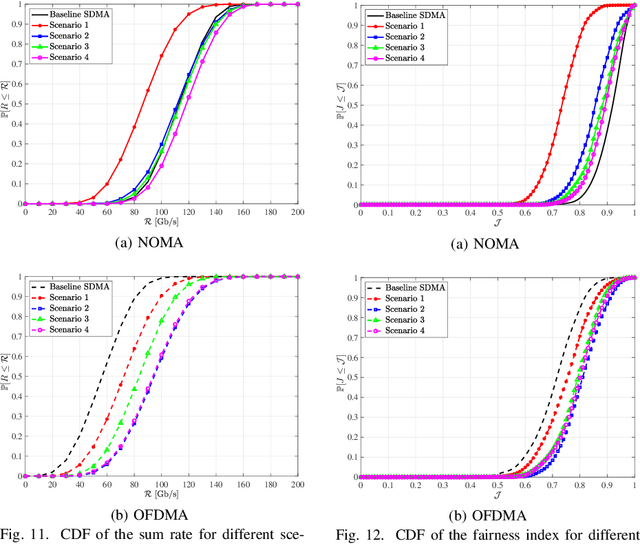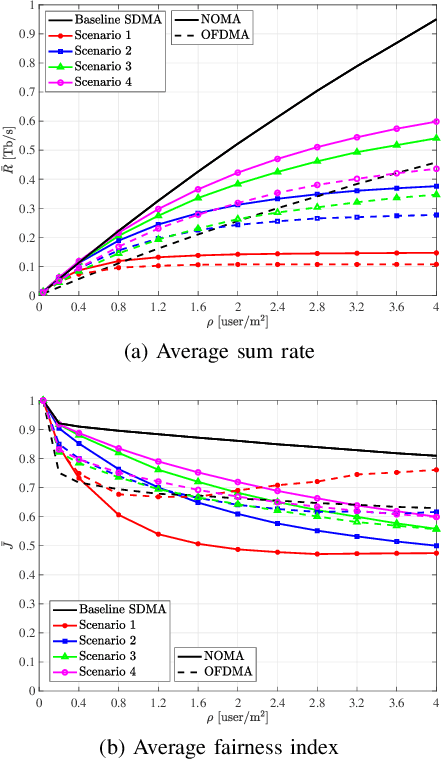Michael Crisp
A Novel Terabit Grid-of-Beam Optical Wireless Multi-User Access Network With Beam Clustering
Apr 05, 2024



Abstract:In this paper, we put forward a proof of concept for sixth generation (6G) Terabit infrared (IR) laser-based indoor optical wireless networks. We propose a novel double-tier access point (AP) architecture based on an array of arrays of vertical cavity surface emitting lasers (VCSELs) to provide a seamless grid-of-beam coverage with multi-Gb/s per beam. We present systematic design and thorough analytical modeling of the AP architecture, which are then applied to downlink system modeling using non-imaging angle diversity receivers (ADRs). We propose static beam clustering with coordinated multi-beam joint transmission (CoMB-JT) for network interference management and devise various clustering strategies to address inter-beam interference (IBI) and inter-cluster interference (ICI). Non-orthogonal multiple access (NOMA) and orthogonal frequency division multiple access (OFDMA) schemes are also adopted to handle intra-cluster interference, and the resulting signal-to-interference-plus-noise ratio (SINR) and achievable data rate are derived. The network performance is studied in terms of spatial distributions and statistics of the downlink SINR and data rate through extensive computer simulations. The results demonstrate that data rates up to 15 Gb/s are achieved within the coverage area and a properly devised clustering strikes a balance between the sum rate and fairness depending on the number of users.
Design and Optimisation of High-Speed Receivers for 6G Optical Wireless Networks
Dec 30, 2022Abstract:To achieve multi-Gb/s data rates in 6G optical wireless access networks based on narrow infrared (IR) laser beams, a high-speed receiver with two key specifications is needed: a sufficiently large aperture to collect the required optical power and a wide field of view (FOV) to avoid strict alignment issues. This paper puts forward the systematic design and optimisation of multi-tier non-imaging angle diversity receivers (ADRs) composed of compound parabolic concentrators (CPCs) coupled with photodiode (PD) arrays for laser-based optical wireless communication (OWC) links. Design tradeoffs include the gain-FOV tradeoff for each receiver element and the area-bandwidth tradeoff for each PD array. The rate maximisation is formulated as a non-convex optimisation problem under the constraints on the minimum required FOV and the overall ADR dimensions to find optimum configuration of the receiver bandwidth and FOV, and a low-complexity optimal solution is proposed. The ADR performance is studied using computer simulations and insightful design guidelines are provided through various numerical examples. An efficient technique is also proposed to reduce the ADR dimensions based on CPC length truncation. It is shown that a compact ADR with a height of $\leq0.5$ cm and an effective area of $\leq0.5$ cm$^2$ reaches a data rate of $12$ Gb/s with a half-angle FOV of $30^\circ$ over a $3$ m link distance.
 Add to Chrome
Add to Chrome Add to Firefox
Add to Firefox Add to Edge
Add to Edge